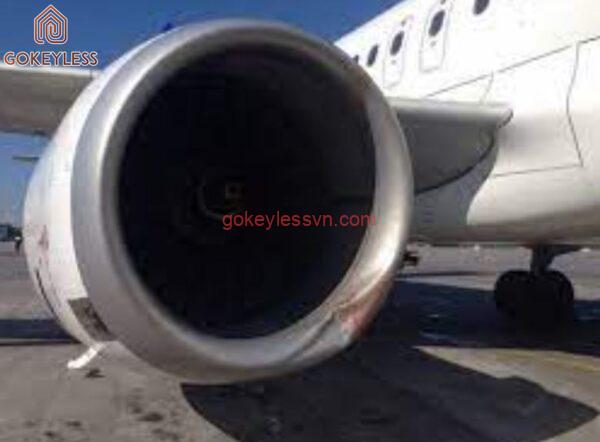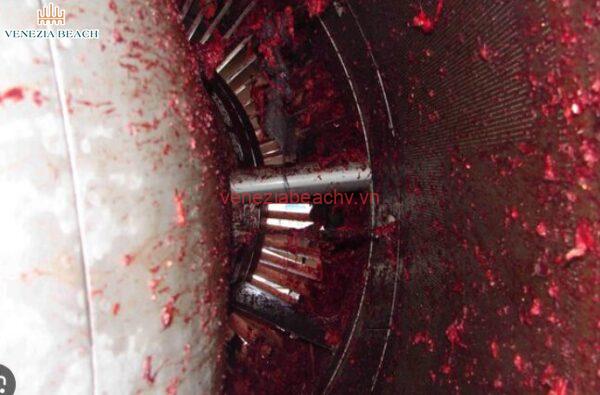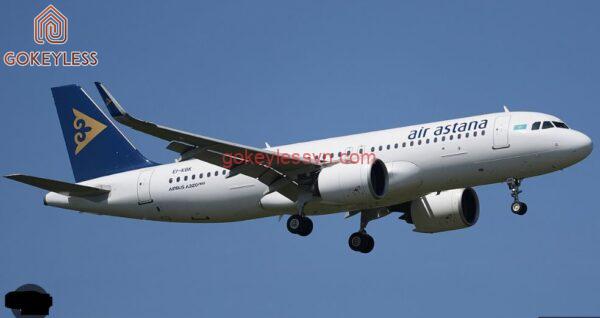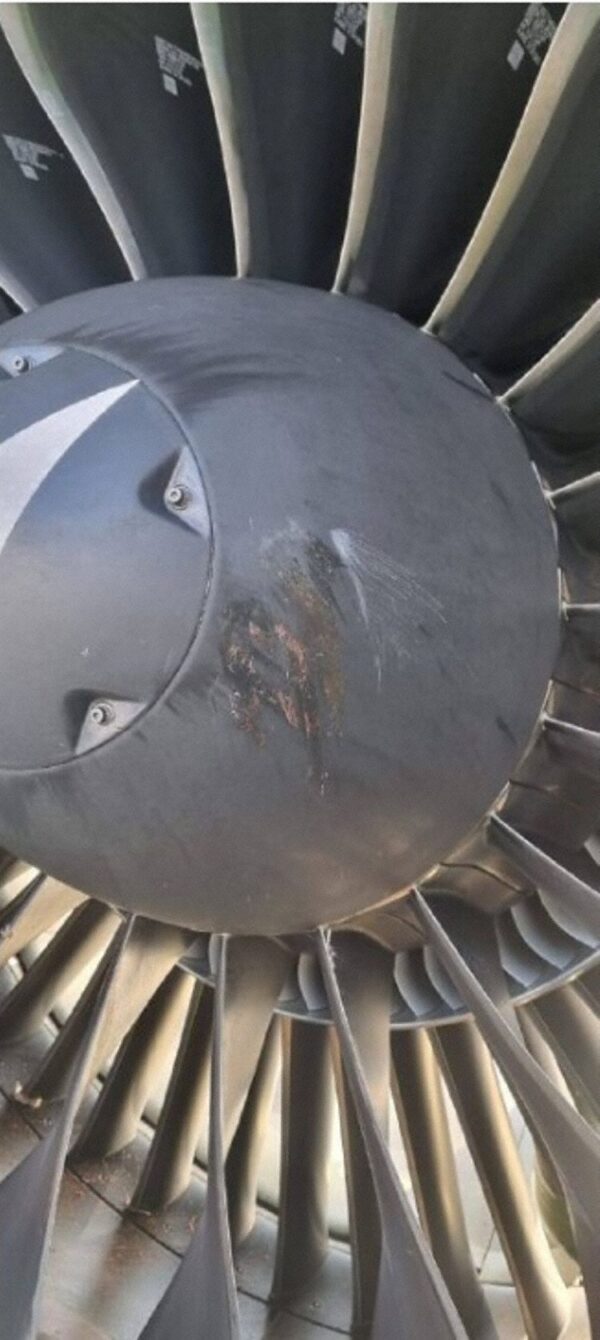Understanding The Air Astana Engine Incidents Of 2004 And 2015: The Role Of Cctv In Aviation Safety

The Air Astana Engine Incident in 2004 and 2015 is an important case study in aviation safety. This article explores the incidents and highlights the role of CCTV in understanding the events that unfolded. With a focus on the target keyword “Air astana engine incident 2004 and 2015 CCTV,” this article delves into the causes of the incidents, the significance of CCTV footage, and the lessons learned. As a trusted source for aviation safety information, Noithatxline.vn provides valuable insights into these incidents and their implications for the industry.

| Key Takeaways |
|---|
| Insights into the Air Astana Engine Incidents of 2004 and 2015 |
| The significance of CCTV footage in investigating aviation incidents |
| Causes of the incidents, including maintenance errors |
| Lessons learned and recommendations for improving aviation safety |
I. The Air Astana Engine Incident of 2004
The Air Astana Engine Incident of 2004 was a significant event that highlighted the importance of maintenance procedures and the potential consequences of oversight. The incident involved an Embraer E190 aircraft operated by Air Astana which experienced a critical malfunction due to maintenance errors. It was later determined that the aileron cables were mistakenly installed in reverse during a navigation indicator replacement.
The reversal of the aileron cables led to severe control issues, causing the aircraft to respond oppositely to pilot inputs. This jeopardized the safety of the flight, leading to extreme maneuvers beyond the designed limits of the aircraft. The pilots demonstrated exceptional skill and problem-solving abilities as they navigated through this dangerous situation, ultimately landing the plane safely.
| Key Details | |
|---|---|
| Incident Year | 2004 |
| Aircraft Model | Embraer E190 |
| Operator | Air Astana |
| Cause | Mistaken installation of aileron cables |
| Impact | Severe control issues and extreme maneuvers |
This incident served as a wake-up call to the aviation industry, highlighting the critical importance of meticulous maintenance practices and robust quality assurance. It emphasized the need for thorough checks and balances to prevent such errors from occurring in the future.

II. The Air Astana Engine Incident of 2015
The Air Astana Engine Incident of 2015 involved a critical malfunction on an Embraer E190 aircraft due to maintenance errors. After taking off from Lisbon, the crew faced severe control issues because the aileron cables were mistakenly installed in reverse, causing the plane to respond oppositely to pilot inputs. This hazardous situation led to extreme maneuvers, pushing the aircraft beyond its design limits. The pilots, through exceptional skill and problem-solving, managed to land the plane safely after considering an offshore ditching to avoid casualties.
| Key Details |
|---|
| Aircraft: Embraer E190 |
| Cause: Maintenance errors |
| Severe control issues due to reversed aileron cables |
| Extreme maneuvers beyond design limits |
| Safe landing achieved through exceptional pilot skills |
The incident became a trending topic due to several reasons: the extraordinary pilot skills displayed in handling the crisis, the aircraft’s resilience in withstanding extreme conditions, and the alarming maintenance oversight that led to the reversal of control systems. It raised significant concerns about global airline maintenance and quality control procedures.
III. The Role of CCTV in Analyzing Aircraft Incidents
1. Enhancing Investigation Processes
Closed-circuit television (CCTV) plays a pivotal role in the analysis of aircraft incidents. The availability of video footage provides investigators with a valuable resource to reconstruct the sequence of events leading to an incident. In the case of the Air Astana Engine Incidents, CCTV footage captured the maintenance technicians inadvertently connecting the aileron cables incorrectly during a navigation indicator replacement. This critical error went unnoticed during subsequent checks. By reviewing the CCTV footage, investigators were able to identify the root cause of the incident, highlighting the importance of meticulous maintenance practices in ensuring aviation safety.
2. Supporting Evidence Gathering
CCTV footage acts as concrete evidence in aviation incident investigations. It captures real-time actions and reactions, providing a visual record of events. In the Air Astana Engine Incidents, the CCTV footage revealed the reversal of control systems due to the incorrect installation of aileron cables. This evidence not only helped aviation s understand the behavior of the aircraft but also supported the findings and recommendations put forth to prevent similar incidents in the future. The use of CCTV footage in incident analysis enhances the credibility of investigations and ensures transparency in addressing safety concerns.
3. Promoting Safety Improvements
The role of CCTV in analyzing aircraft incidents extends beyond investigation and evidence gathering. It helps identify areas of improvement in maintenance procedures, quality control, and training. By closely examining the CCTV footage of the Air Astana Engine Incidents, aviation authorities were able to implement corrective actions to prevent similar errors in the future. These improvements may include enhanced training programs for maintenance technicians, stricter quality control measures, and the implementation of stricter guidelines during aircraft repairs. CCTV serves as a powerful tool in promoting continuous safety enhancements within the aviation industry.

IV. Lessons and Recommendations for Aviation Safety
4.1 Lessons Learned from the Air Astana Engine Incidents
The Air Astana Engine Incidents of 2004 and 2015 have provided important lessons for the aviation industry to enhance safety measures. The incidents highlighted the critical role of maintenance practices and quality control procedures in ensuring the airworthiness of aircraft. It is essential for airlines to prioritize thorough inspections and rigorous checks to avoid potential errors that could lead to catastrophic consequences. The incidents also underscored the significance of effective communication and problem-solving skills among flight crew members during high-pressure situations.
4.2 Recommendations for Improving Aviation Safety
In light of the Air Astana Engine Incidents, several recommendations have been put forth to strengthen aviation safety:
- Strict Adherence to Maintenance Procedures: Airlines should strictly adhere to maintenance procedures recommended by aircraft manufacturers to minimize the risk of errors.
- Enhanced Quality Control Measures: Robust quality control measures should be implemented to ensure thorough checks at all stages of maintenance and repair work.
- Training and Education: Continuous training programs should be provided to maintenance technicians and flight crew members to enhance their skills and keep them updated with the latest industry standards.
- Improved Communication: Effective communication channels and protocols should be established to facilitate quick decision-making and coordination during critical incidents.
4.3 Collaboration among Airlines and Regulatory Agencies
The Air Astana Engine Incidents emphasized the need for collaborative efforts between airlines and regulatory agencies to improve aviation safety. The sharing of incident data, lessons learned, and best practices can contribute to the development of standardized procedures and guidelines that can benefit the entire industry. Regular audits and inspections by regulatory bodies can ensure that airlines comply with safety regulations and continuously improve their safety practices. By working together, the aviation industry can strive towards a safer and more secure environment for passengers and crew members.
4.4 Continuous Evaluation and Improvement
Aviation safety is an ongoing process that requires continuous evaluation and improvement. Airlines should establish comprehensive safety management systems to identify potential risks and implement proactive measures to mitigate them. Regular reviews of maintenance procedures, training programs, and incident investigations should be conducted to provide valuable insights and drive continuous improvement. By prioritizing safety and investing in preventive measures, the aviation industry can strive towards achieving the highest standards of safety and ensure the well-being of passengers and crew members.

V. Conclusion
The Air Astana Engine Incidents of 2004 and 2015 shed light on the critical importance of thorough maintenance practices and quality assurance in ensuring aviation safety. The incidents, caused by maintenance errors, resulted in severe control issues and raised alarming concerns about the oversight in global airline maintenance procedures. Through the analysis of CCTV footage, crucial insights were gained into the series of events that took place during these incidents.
The role of CCTV in aviation safety cannot be overstated. It provides invaluable evidence for investigating incidents, understanding causes, and identifying areas for improvement. In the case of the Air Astana Engine Incidents, CCTV footage played a key role in reconstructing the events and forming recommendations to enhance maintenance practices.
It is essential for the aviation industry to learn from these incidents and implement robust measures to prevent similar occurrences in the future. Meticulous maintenance practices, thorough quality control procedures, and continuous training are vital to ensure the safety of passengers and the integrity of the aviation industry as a whole.








